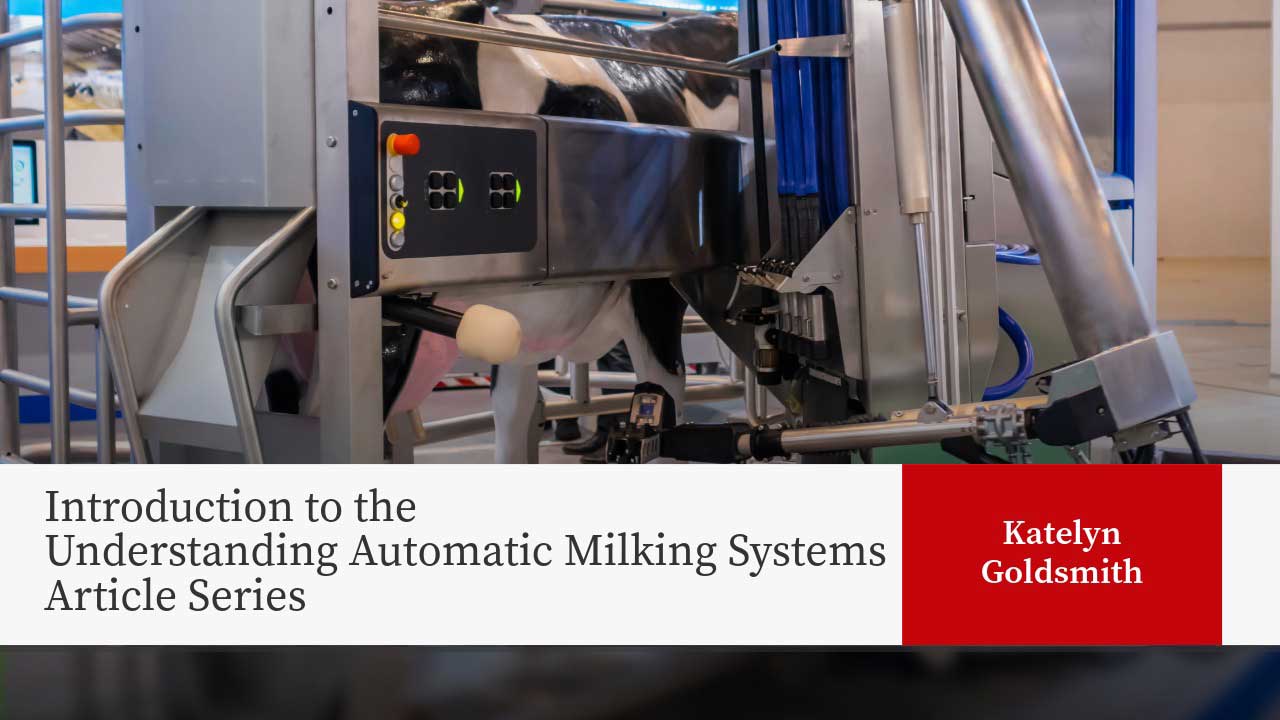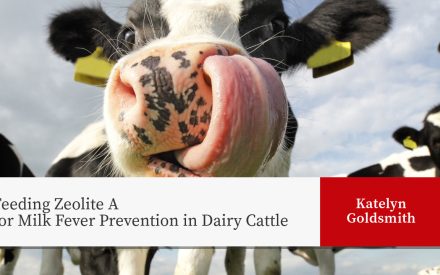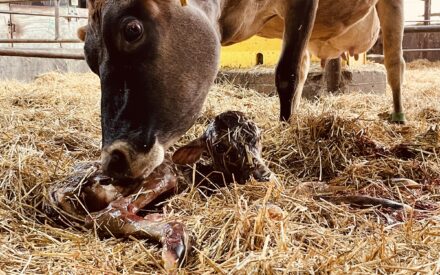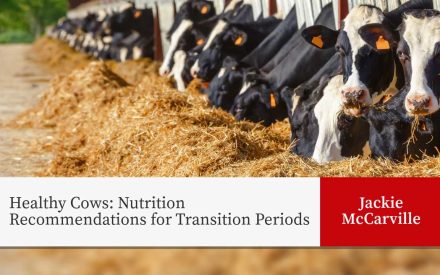
Introduction
The use of Automatic Milking Systems (AMS) 🔍 on dairy farms has steadily grown since their introduction in the late 1990s and early 2000s. Also known as Robotic Milkers 🔍, AMS utilizes robotic arms 🔍, sensors, and automated controls to milk cows with minimal human intervention.
The Rise of Automatic Milking Systems (AMS)
Since the first installation of an AMS system on a commercial farm in the Netherlands in 1992, adoption has grown significantly, with an estimated 35,000 units in operation worldwide in 2022 (de Koning et al., 2002; Geiger, 2022). In Wisconsin, an estimated 6-8% of dairy farms have adopted this technology (Debnath, 2024; Burney et al., 2023). Initially developed to address labor shortages, farmers have implemented AMS to reduce reliance on employees, manage labor costs, and replace worn-out systems. After implementing AMS, farmers have reported greater flexibility in managing tasks and schedules, improved milk production, enhanced cow comfort, and reduced labor needs (Burney et al., 2023). But, of course, these benefits came with challenges. Farms using AMS typically have a higher cost of milk production than those using conventional milking systems. Additionally, the transition to automation adds complexity and requires more advanced technical skills and employee training.
Navigating AMS Adoption
As AMS adoption continues to grow, research and practical knowledge about these systems continues to expand, offering valuable insights into how to best integrate and manage these systems on dairy farms. While AMS offers flexibility in labor and herd management, successful implementation requires careful thought and planning. From budgeting and investment to changes in farm management, there are numerous factors to evaluate when deciding how AMS may fit into an operation and how to maximize its efficiency and profitability. To support this process, a self-assessment tool was developed to help farmers explore how automation, including AMS, may or may not align with their operation. The AMS adoption self-assessment tool is available online and can be downloaded and used individually to support decision making ↗️.
The AMS Learning Series
In this project, the Dairy Team within the University of Wisconsin-Madison Extension has developed a collection of articles covering essential aspects of AMS implementation and management. This collection serves as a valuable foundation for farmers, nutritionists, veterinarians, financial advisors, researchers, and others working with AMS. Whether you are considering AMS adoption, have recently implemented a system, or are looking to refine your existing operations, these articles offer insights to maximize the benefits of AMS technology.
These resources address topics listed below.
- Automatic Milking Systems Glossary: A Guide to Key AMS Terms and Concepts
- Decision Making: Adopting New Technology – Start with the Right Questions ↗️
- Hoof Health: Keep Your Cows Moving; Essential Hoof Care for AMS
- Facilities and Design: Coming Soon
- AMS Maintenance: Coming Soon
- Nutrition Management: Coming Soon
- Milk Quality and Udder Health: Coming Soon
- Pen Management: Coming Soon
- Transition and Fresh Cow Management: Coming Soon
- Reproduction: Coming Soon
- Animal Wellbeing, Behavior, and Welfare: Coming Soon
- Cost Considerations: Coming Soon
- Broadband and Connectivity: Coming Soon
- People Management: Coming Soon
Authors

Katelyn Goldsmith
Dairy Outreach Specialist– In her role as a statewide Dairy Outreach Specialist, Katelyn connects research with practical farm management practices to create educational programming addressing the needs of Wisconsin dairy producers.
References
- de Koning, K., van der Vorst, Y., Meijering, A. (2002). Automatic milking experience and development in Europe. Proceedings of the First North American Conference on Robotic Milking, I1-I11.
- Geiger, C. (2022). Automated milking systems reach 35,000 units. Hoard’s Dairyman. Online available at https://hoards.com/article-31484-automated-milking-systems-reach-35000-units.html ↗️ (access date 4-17-2025)
- Debnath, A. (2024). What robotics means for the future of Wisconsin dairy farms. PBS Wisconsin. Online available at https://pbswisconsin.org/news-item/what-robotics-means-for-the-future-of-wisconsin-dairy-farms/ ↗️ (access date 4-17-2025)
- Burney, S., Peña-Lévano, L., Escalante, C., Melo, G., Gutierrez-Li, A., & Salfer, J. (2023). Feasibility of automatic milking systems in the Midwest [Conference presentation]. Annual AAEA Meeting, Washington, DC. Online available at https://projects.sare.org/media/pdf/2/0/2/2023-AAEA-AMS-Presentation.pdf ↗️ (access date 4-17-2025)
Reviewers

Carolina Pinzón-Sánchez
Bilingual Dairy Outreach Specialist – As a statewide Dairy Outreach Specialist, Carolina identifies needs and incorporates research findings into high-quality outreach education programs around dairy production.


 Feeding Zeolite A for Milk Fever Prevention in Dairy Cattle
Feeding Zeolite A for Milk Fever Prevention in Dairy Cattle Fresh cows: Milk fever
Fresh cows: Milk fever Healthy Cows: Nutrition Recommendations for Transition Periods
Healthy Cows: Nutrition Recommendations for Transition Periods Are my dairy cattle fit for transport?
Are my dairy cattle fit for transport?


